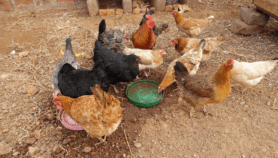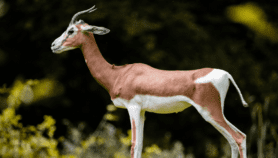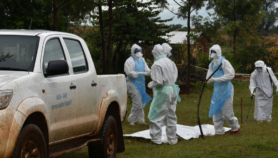Send to a friend
The details you provide on this page will not be used to send unsolicited email, and will not be sold to a 3rd party. See privacy policy.
Scientists have called for a "global early warning system" to track infectious diseases that jump from animals to humans, in a paper published in Nature today (17 May).
The review identifies huge gaps in our understanding of the origins of major infectious diseases in temperate and tropical countries.
Many of these diseases ― HIV/AIDS, malaria, sleeping sickness and dengue fever ― are key health concerns in developing countries.
"The emergence of the major diseases of humanity is not a random process," says Nathan Wolfe, professor of epidemiology at the US-based University of California Los Angeles, who led the research.
"The existence of such patterns suggests that it is possible to move towards an approach that involves forecasting and preventing pandemics rather than waiting for them to spread before trying to control them."
Of the ten tropical diseases studied in the paper, four originated from wild primates. More than half the temperate diseases came from domestic animals.
This is because pathogens cross between related species, such as humans and wild primates in the tropics, and between species that live in close contact with one another ― as humans and domesticated animals do more commonly in temperate zones.
Wolfe highlights the hunting and butchering of wild animals in both developing and developed countries as a source of new diseases.
"Understanding the risks associated with the hunting of wild game and developing animal protein alternatives for poor rural populations will have benefits for not only food security and conservation, but also global and local public health," he adds.
By collecting specimens and screening a wide range of wild and domestic species, scientists can better understand not only which animals existing human diseases came from, but also find clues that could help model and predict the emergence of future diseases.
The authors also recommend combining this with monitoring of people ― such as hunters and wildlife traders ― with high levels of exposure to wild animals.
Wolfe is currently working on projects to put in place disease surveillance systems in Cameroon, China the Democratic Republic of Congo and Malaysia to monitor "spillover of viruses and other microbes from animals to humans".
"The expansion of this monitoring system may have the potential to control new disease threats before they have a major impact on the world," he says.
Reference: Nature 447, 279 (2007)













